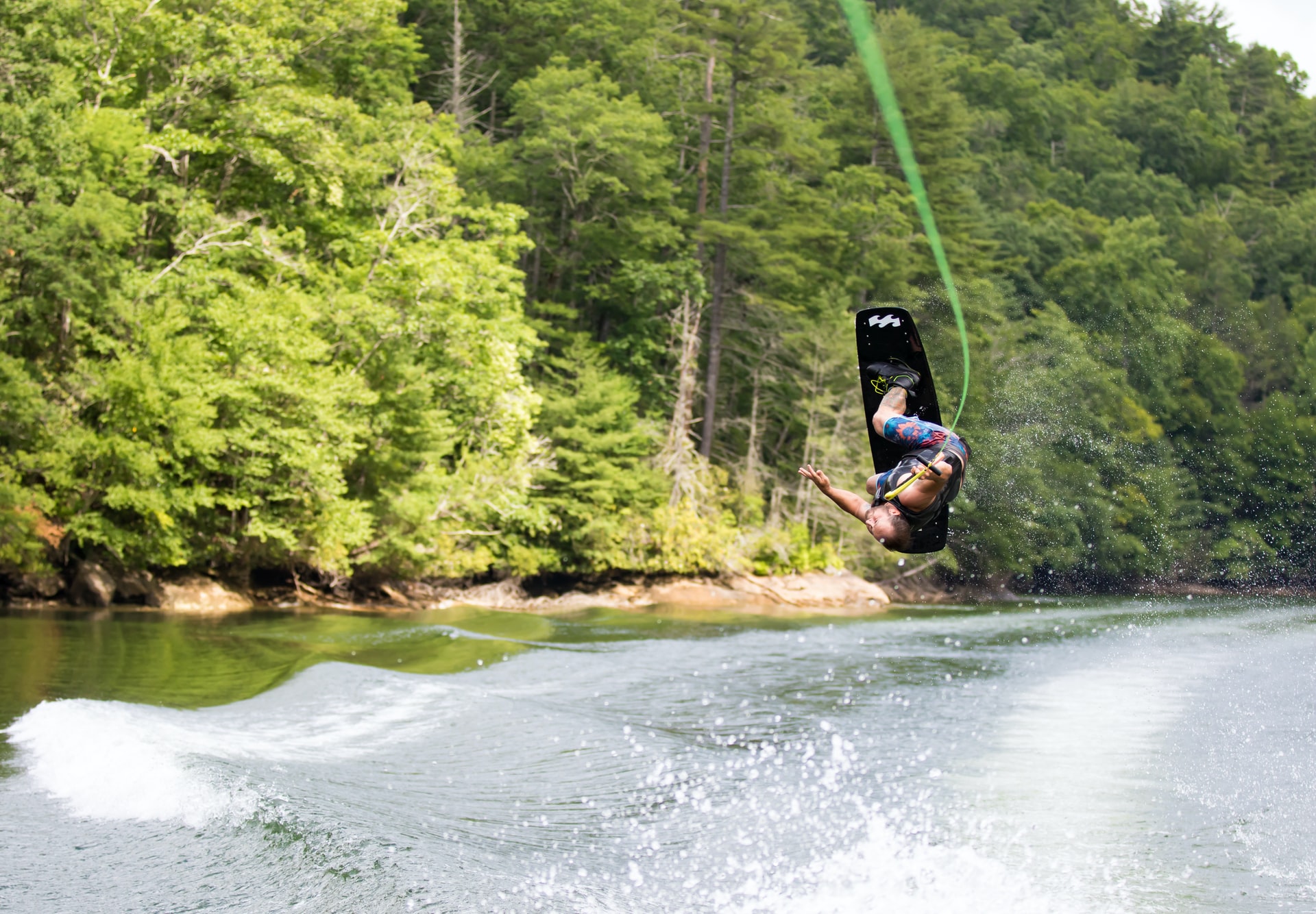Each year with the arrival of summer, pontoon boat owners finally take out their boats to get into the water and battle the overwhelming heat. Some like to relax under the sun with a book and a drink, while others prefer an extra shot of adrenaline.
Now, if you’re someone who isn’t a fan of fishing but loves water skiing or tubing, you may need some guidance on how to attach a tow rope to a pontoon boat. In this step-by-step guide, we answer your question.
Let’s dive right in!
Step 1: Determine the Perfect Spot on the Boat to Attach the Rope
A lot of people consider fitting a tow rope to the cleats of their boats, but this isn’t the best or the safest option out there. The reason behind this is that if the cleats come off, which is likely to happen at any point, they could act as projectiles.
As a result, the cleats could harm the person you’re pulling with your pontoon. Therefore, we recommend that you steer clear of that area.
Ultimately, the best place to tie your tow rope is to the tow bar at the back of your pontoon. Most boats will already have tow bars installed, so that’s a relief. If your boat doesn’t feature a tow bar, you could contact the boat dealer for suggestions or buy a tow bar online.
Installing a tow bar or ski tower is a piece of cake if you want to do it yourself.
Another good idea is to use tie-down points on the pontoon to attach your tow rope. Use a Y-rope harness for that purpose for extra safety.
Step 2: Choose the Right Type of Towing Rope
For a fun and mistake-free experience in the water, you’ll need to make sure that you attach a suitable rope to your pontoon. This rope has to match the activity you’ll be doing to ensure that you make the most out of your time in the water.
Here are the most common types of rope that you can tie to a pontoon boat.
Nylon Rope
The greatest thing about nylon ropes is that they’re inexpensive, rot-resistant, and flexible. However, their huge elasticity may not be an advantage if you face waves or wind.
Being highly flexible means that nylon ropes aren’t shock-absorbent. While this isn’t a downright deal-breaker, it can be a less safe choice when water skiing or tubing.
Still, if you wish to go for nylon rope, a lot of people recommend buying a three-strand rope for its incredible strength.
Ski Rope
You can’t go wrong with ski rope as it’s the most versatile type of tow rope in the market. This rope is usually 70 feet in length, and you’ll get a five-foot handle at the end of the rope. You’ll probably need to invest in a pair of water ski gloves to get a hold of this rope.
If you’re skeptical about the huge length of the ski rope, don’t worry. This type of tow rope is divided into sections of different colors. To get the perfect rope length, just remove the parts of the rope that you don’t need.
Polypropylene Rope
Also known as yellow rope, polypropylene rope is a great choice for both wakeboarding and water skiing. It’s also a suitable alternative to nylon rope as it offers almost the same level of strength.
However, the main downside to this type of rope is that it’s not as weather-resistant as nylon or ski rope. Polypropylene rope has a much shorter lifespan in comparison to the previous two choices.
Step 3: Make Up Your Mind About the Perfect Rope Knot
Now that you’ve picked your favorite towing rope and chosen the right location to attach it, it’s time to tie the knot. Luckily, many types of rope knots can work well in this scenario, including:
Remember that these knots must be done correctly to ensure the security of those you’ll be pulling with your pontoon boat. If you don’t have much experience in tying knots, you could always hire a professional to do it instead.
How Far Should a Tube Be Behind a Pontoon Boat?
For safety measures, tubers or water skiers should be at least 100 feet behind the boat.
The reason behind this is that if a spill happens, you’ll need a suitable distance for the tube rider to stay in the water without coming in contact with the boat’s rear.
It’s also important to understand that you’ll need to stay as far as possible from the docks and other boats when you’re towing someone.
How Fast Should a Pontoon Boat Go When Tubing?
For a thrilling yet safe experience, you should keep the speed of your pontoon between 20 and 25 mph. Going too slow won’t be as fun, while driving faster may not be the wisest thing to do.
Keep in mind that the speed that the tube will be going at may be double the original speed of the boat. So, if you’re riding your pontoon at 20 mph, the tube could be flying at 40 mph.
Knowing this is important during turns or when you’re slowing down to ensure the safety of the tube riders. Take extra precaution when slowing your pontoon, and do it gradually to give the tube some time to adjust to this change of speed.
To Wrap It Up
Learning how to attach a tow rope to a pontoon boat is a must when you’re planning to spend your summer riding a tube in the cool water. For an equal amount of fun and safety, your best bet is to tie the rope to a tow bar at the back of the rope.
Once you combine the right attachment spot with a suitable rope type and the perfect knot, you can pull water sport towables securely. Now, the fun can really begin once the summer is here!




